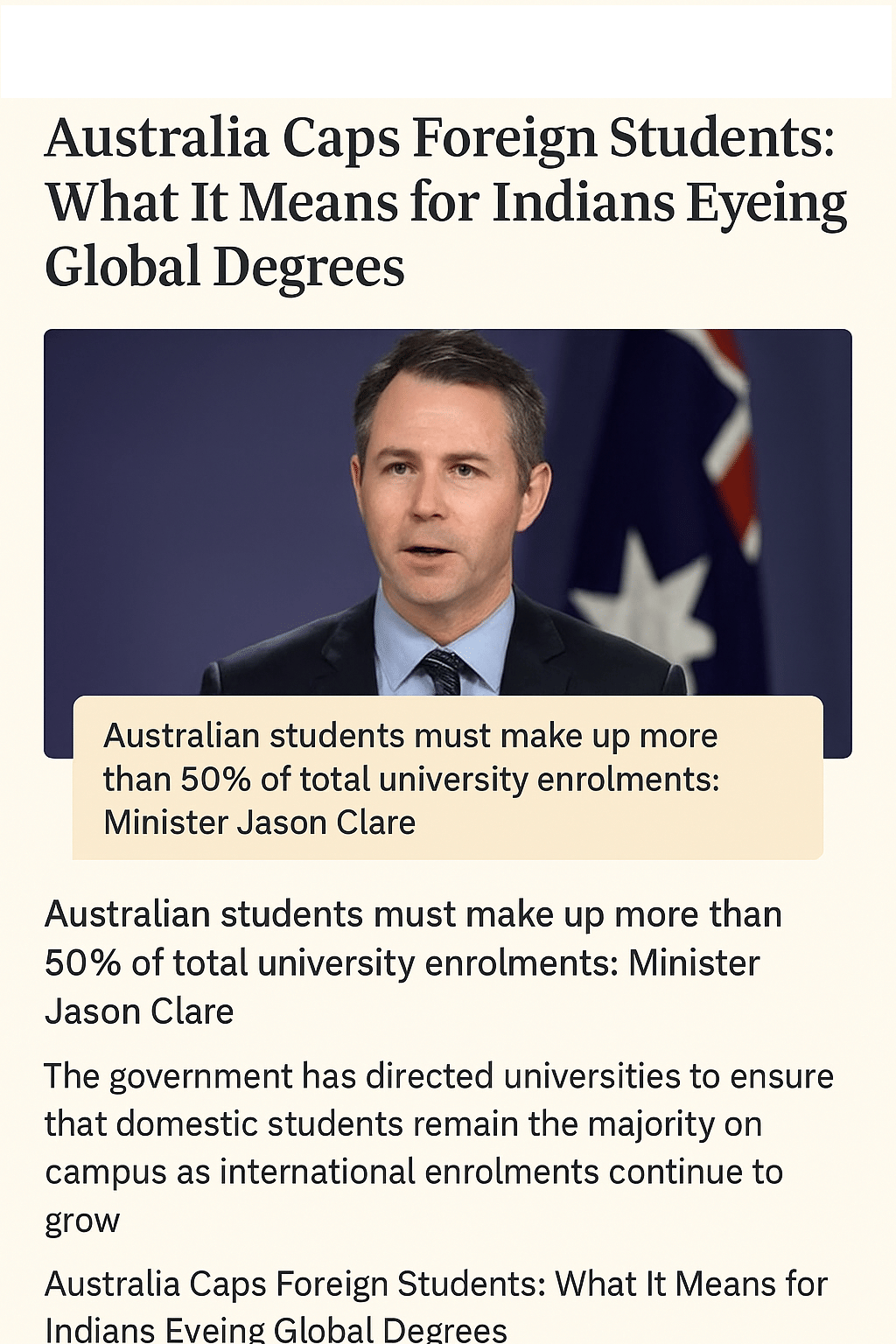Jasmine Grover Study Abroad Expert
Study Abroad Expert | Updated On - Oct 29, 2025
Australia has announced new enrolment rules requiring universities to maintain a majority of domestic students on campus, a move set to reshape the study-abroad landscape for thousands of Indian aspirants.
Education Minister Jason Clare confirmed that Australian students must now make up more than 50% of total enrolments at all universities. The decision follows a rapid surge in international admissions — particularly from India — at top universities such as the University of Sydney, RMIT University, and Murdoch University, where foreign students recently crossed the 50% threshold.
As of 2024, international students represented 51% of enrolments at the University of Sydney, 57% at Murdoch University, and just above 50% at RMIT. Similar figures were observed across other major institutions including Monash University (45%), University of Melbourne (44%), and University of New South Wales (47%).
Study in Australia Latest News for Indian Students
- University of Sydney Denied More International Student Seats in 2026
- Macquarie University Offers Up to AUD $50,000 in Scholarships for Indian Students
- Australia Launches Priority Visa System for Select Universities
Impact on Indian Students
India is the second-largest source of international students in Australia, accounting for around 17% of all foreign enrolments. The new cap is expected to limit the number of seats available for upcoming intakes, particularly in high-demand fields such as engineering, IT, healthcare, and business.
Check: Intakes in Australia
Despite this, experts say the measure doesn’t mark a decline in opportunities for Indian students, but rather a recalibration of the system.

Economic and Institutional Significance
International education is Australia’s fourth-largest export sector, generating A$51.5 billion in 2023–24, of which A$21.7 billion came from tuition and A$29.6 billion from local spending on housing, food, and transportation. The sector also supports over 250,000 jobs, many linked directly to student housing and campus services.
Analysts say the new cap reflects the government’s effort to address broader concerns — including housing shortages, migration management, and post-study work policies — without undermining Australia’s global appeal as a study destination.
Why the Cap Matters
The government’s directive underscores a strategic shift toward “sustainable internationalisation” — promoting quality over quantity. Institutions will now be expected to:
- Expand student housing capacity before increasing overseas enrolments.
- Develop more diverse student cohorts, with stronger engagement from South and Southeast Asia.
- Maintain transparent policies on tuition, accommodation, and local integration.
For Indian Aspirants: What’s Next
While Australia remains a top choice for Indian students due to its 2–4 year post-study work opportunities and globally ranked universities, applicants may face tighter competition for 2026 intakes.
To stay ahead, students should:
- Apply early for 2026 sessions (most open in November 2025).
- Focus on in-demand programs such as data science, health sciences, and renewable energy.
- Explore regional universities, which continue to offer strong post-study visa options and growing scholarship support.
The cap signals a new phase in Australia’s higher education strategy — one that seeks to protect domestic access while preserving global connections. For Indian students, it means more planning and competition, but also continued opportunity — provided they adapt early to the evolving admission landscape.



Comments